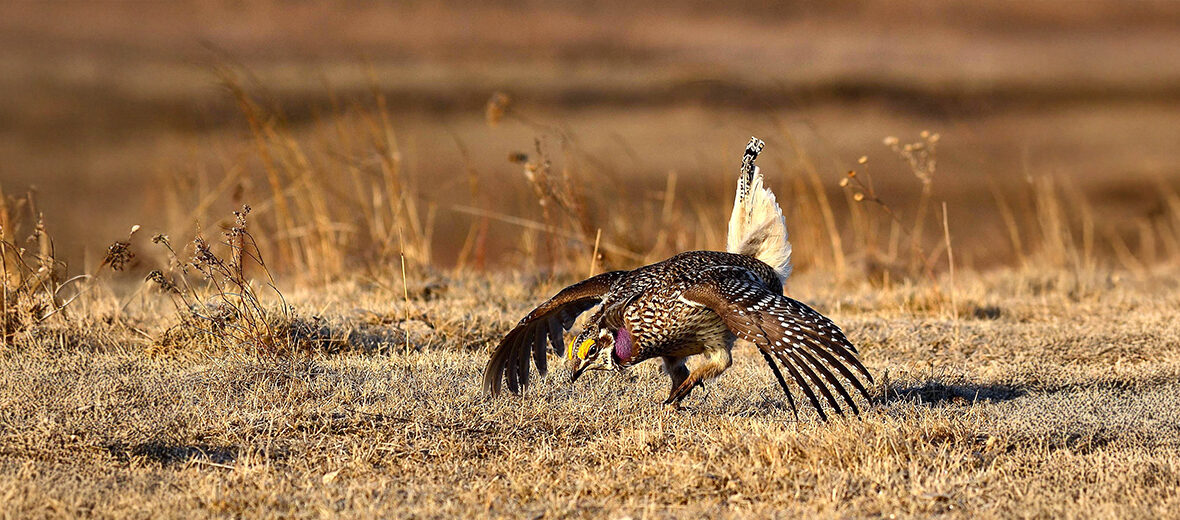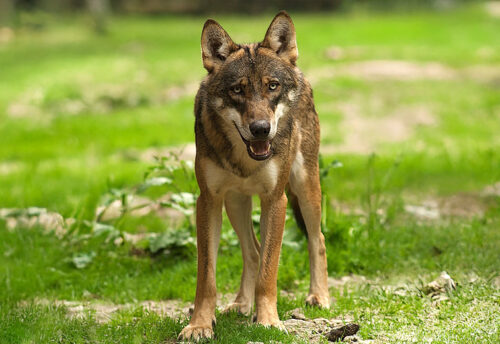
The sharp-tailed grouse, aka sharptail grouse or fire grouse, is a mid-sized prairie grouse that hails from Alaska, Canada, and the United States. Sans hunting, trapping, and habitat loss, these grouse are not only listed as Least Concern by the IUCN, but their numbers are actually increasing. These grouse number an estimated 760,000+ wild individuals. In spite of this good news, they are considered an endangered or threatened species in some states due to local extirpation.
First the Stats…
Scientific name: Tympanuchus phasianellus
Weight: Up to 31 ounces
Length: Up to 19 inches
Wingspan: Up to 25.6 inches
Lifespan: Up to 7.5 years
Now on to the Facts!
1.) These grouse are the provincial bird of the Canadian province of Saskatchewan.
2.) George Edwards included an illustration as well as a description of the sharp-tailed grouse in the 3rd volume of his A Natural History of Uncommon Birds in 1750.
3.) These birds tend to forage on the ground during the summer months, and in trees during the winter.
4.) Berries, buds, forbs, leaves, & seeds, plus insects, primarily grasshoppers are all readily consumed.
5.) Being a species of lekking bird, these birds display in open areas, aka leks, with other males, and number anywhere from an individual male to upwards of 20 in a single lek. A lek is an gathering area where animals engage in displays and courtship behaviors.
But wait, there’s more on the sharp-tailed grouse!
6.) During their courtship behaviors the males will stomp their feet rapidly, up to 20 times per second, and rattle their tail feathers while spinning in circles and/or dancing forward. Purple neck sacs are then inflated and deflated. The males use “cooing” calls also to attract females and compete with males.
7.) Sometimes, a low-ranking male may behave like a female, then approach the dominant male to fight him.
Did you know…?
Habitat fragmentation as been these grouse’s greatest adversary. with agriculture being the top reason for habitat destruction.
8.) Most nests are constructed on the ground, among thick brush and woods at marsh edges.
9.) Females lay up to 17 eggs, with 10 – 13 being the average. The eggs hatch in up to 24 days.
10.) Chicks are hatched in a precocial state. This means that they hatch with their eyes open, are self-reliant, and do not require their mother to feed them.
But wait, there’s still more on the sharp-tailed grouse!
11.) In some cases crested wheatgrass and smooth brome have forced out the native vegetation, thus creating monoculture habitats. Monoculture habitats are not taken too lightly by these grouse, as they prefer sites with high heterogeneity (diversity).
12.) Horned owls, goshawks, red-tailed hawks, coyotes, foxes, skunks, raccoons, weasels, and northern harriers all prey on these grouse.
13.) These birds are diurnal (active during the day).
Now a Short Sharp-Tailed Grouse Video!
Be sure to share & comment below! Also, check out the Critter Science YouTube channel. Videos added regularly!

Want to suggest a critter for me to write about? Let me know here.
Some source material acquired from: Wikipedia & IUCN
Photo credit: USFWS Mountain-Prairie



